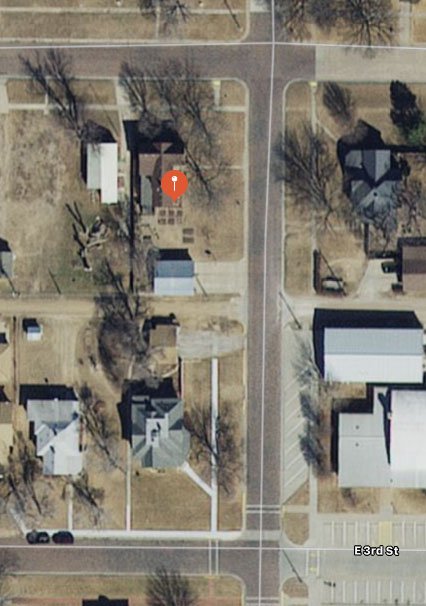BY VERONICA COONS
vcoons@gbtribune.com
ELLINWOOD — In his 1914 poem “Mending Wall,” the American poet Robert Frost wrote “good fences make good neighbors,” and scholars have been debating the meaning behind the poem ever since. Tuesday night, the Ellinwood Planning Commission met and drilled down to the specifics of exactly what a good fence means for their community.
First, the city earlier this year approved a new complete city ordinance code after years spent researching and discussing what should be included. City Manager Chris Komarek pointed out, among them, fencing has been carefully considered and debated. Among the ordinances addressing the topic, it was determined that any front-yard fence shall not be higher than 3 feet. In addition, corner lots would be subject to front-yard setbacks on both sides of the house fronting a street.
But, “we ran into a situation where I don’t think we gave much consideration before,” he said. The O’Neils, an Ellinwood couple, applied for a permit to install a 6-foot privacy fence on the side of their property in order to contain their Labrador Retriever, and their request was denied because of the double-frontage rule. But, in reviewing the reasons behind updated ordinance, it became clear their proposal would not adversely affect neighboring properties.
“We were trying to avoid a situation in which an adjoining property owner’s view of the street is blocked by his neighbor’s privacy fence,” Komarek said. Using photographs to illustrate his point, he displayed one in which a property facing the street perpendicular to the one a corner lot property faces now subjected to a view of the neighbors privacy fence, which extended to the sidewalk along the street.
“This is what we felt all along we were trying to control,” he said.
Another concerning factor, he added, is keeping the sight triangle at the intersection unobstructed. What made the O’Neils’ situation different is their property extends to the alley, as does their neighbor’s on the back side. Their proposed fence would not obstruct a neighbor’s front-yard view. In addition, the proposed fence would not obstruct the sight triangle.
Komarek’s recommendation to the O’Neils was to hold off on their variance request so the planning commission could discuss amending the ordinance to address the situation. That way, property owners with similar lots, referred to as “reverse corner lots” would not need to file for a variance in the future.
After a lengthy discussion, the commission agreed an amendment to the fencing ordinance, as well as the setback ordinance, was in order. Their recommendation will go to the city council on Oct. 8, and if it is passed then, the O’Neils will be able to proceed with their application without having to go through the variance process. The O’Neils agreed, and their variance request for fencing at 117 E. 4th was tabled.
Changes to the application for a fence permit which arose recently were also discussed. Nearly 50 years ago, two neighbors asked for a setback variance so one could build an addition to their house. The agreement no longer suits the current property owners. One of the homeowners’ application for a new fence revealed it would adversely affect their neighbor, Komarek explained.
Since the current application requires the neighbor to sign off, the project is now at a standstill. The proposal was to clarify the ordinance to allow neighbors to build a fence along a property line if both neighbors agree, or without agreement, the fence needs to be setback at least 1 foot off the survey line. Changing the ordinance, however, will not solve the scenario Komarek shared because of structure setback issues, which underscored the necessity for commissioners to use caution when granting variances, Komarek pointed out.
Another fence issue arose recently when it came to the city’s attention that due to a possible leak in a sewer line, the city may need to remove a section of fencing built directly over the city’s utility easement. Komarek provided another look back at how the city has changed over the years. In some areas of town, power and communication lines were placed underground, especially in areas where access to overhead lines to maintenance crews was impeded. Now, 30 years later, those underground utilities have been covered over with all manner of obstacles, from trees to structures to fences installed without permits over the years.
“Quite honestly, we allowed them to build fences on top of our utility right of ways because quite honestly, we don’t ever have to get back in but once every 30 years,” he said. “But guess what, 30 years just hit this week.”
He questioned if in the future, the city should allow them to build parallel on top of the utility right of ways.
More than one commissioner was emphatic that city easements need to be left alone. They were in agreement, however, with allowing property owners to build fences perpendicular to and over utilities, provided they understood the city may from time to time need access.





